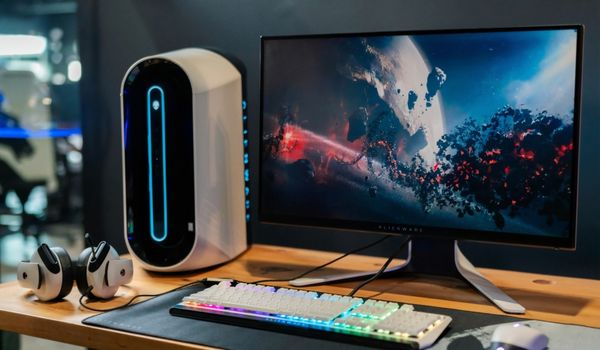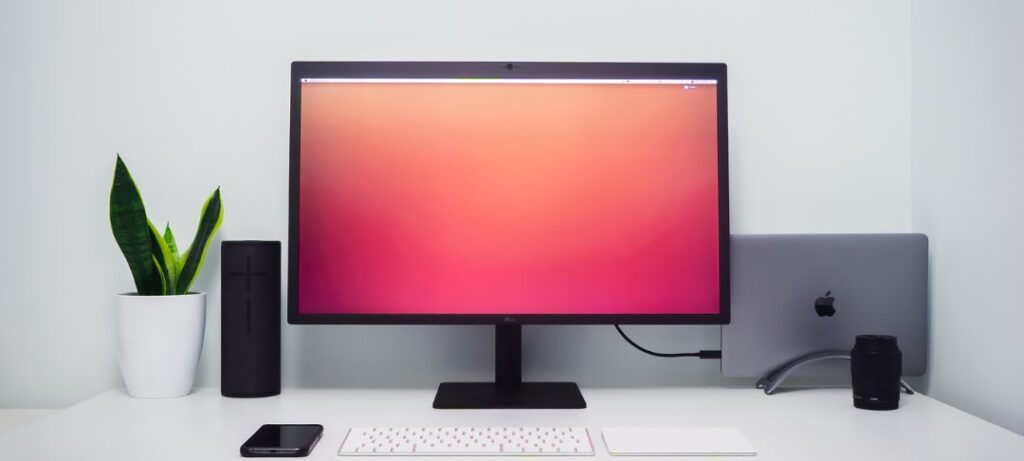Traveling with a monitor can be a daunting task, especially if it is a delicate and expensive piece of technology. However, with the right preparation and packing, you can ensure that your monitor stays safe during transit and arrives in perfect condition at your destination. Whether you’re a professional photographer, graphic designer, or gamer, a well-packed monitor will provide peace of mind and save you the hassle of replacing a damaged one. In this comprehensive guide, we’ll take you through the process of packing a monitor for travel step by step. From gathering necessary materials to preparing the monitor and additional considerations, you’ll have all the information you need to keep your monitor safe and secure during your travels.
Gathering Necessary Materials
Before you start packing your monitor, you’ll need to gather the necessary materials. These materials include the original packaging and manual, an anti-static bag or bubble wrap, foam padding, a box or carrying case, and tape or straps.
The original packaging is the best option for packing your monitor as it is designed to protect it during transit. If you no longer have the original packaging, you can use a sturdy box of a similar size. The manual will come in handy if you need to refer to any instructions while packing the monitor.
An anti-static bag or bubble wrap will protect your monitor from static electricity, which can cause damage to sensitive electronic components. You can purchase anti-static bags online or from a local electronics store. Bubble wrap is also a good option, but it may not provide as much protection as an anti-static bag.
Foam padding will provide extra cushioning and protection for your monitor during transit. You can purchase foam padding from a local packaging supply store or online.
A box or carrying case is required to transport the monitor. If you don’t have a box, you can purchase one that is slightly larger than the monitor to ensure that it fits comfortably. A carrying case is also a good option if you want to transport your monitor by hand.
Finally, you’ll need tape or straps to secure the monitor in the box or carrying case. Make sure to choose a strong and durable tape that won’t break during transit. Straps can also be used to secure the monitor in place, but be sure to use enough to prevent any movement during transit.
Preparing the Monitor
The first step in preparing your monitor for travel is to remove all cables and accessories. This includes the power cord, video cable, and any other attachments. Store these items in a separate bag or box to prevent them from getting lost or damaged.
Next, clean the monitor to remove any dust, fingerprints, or other debris. Use a soft, lint-free cloth and a mild cleaner to gently wipe the screen and case. Avoid using water or abrasive cleaners, as these can damage the monitor.
Finally, protect the screen by covering it with a screen protector or a soft cloth. This will prevent any scratches or cracks from occurring during transit. If you’re using a screen protector, make sure to apply it carefully and avoid trapping any air bubbles.
Additional Considerations

When packing a monitor for travel, there are several additional considerations you need to keep in mind. Firstly, be sure to label the box as fragile. This will alert the handlers and ensure that they take extra care when handling the box.
Transporting the monitor safely is another important consideration. If you’re flying, it’s a good idea to pack the monitor in a checked bag to reduce the risk of damage. If you’re driving, place the box in the trunk or on the floor of the vehicle to prevent it from moving around during transit.
Packing the Monitor: Now that you’ve gathered all the necessary materials and prepared the monitor, it’s time to start packing. The first step is to place the monitor in an anti-static bag or wrap it in bubble wrap. Make sure that the entire monitor is covered, including the edges and corners.
Next, place the foam padding around the monitor, ensuring that it is protected from all sides. If you’re using a box, place the foam padding at the bottom of the box, and then place the monitor on top of it. If you’re using a carrying case, place the foam padding in the bottom and sides of the case.
Once the monitor is in place, use tape or straps to secure it. Make sure that the monitor is secure and can’t move around during transit. If you’re using a box, fill any remaining space with additional foam padding or newspaper to prevent the monitor from shifting during transit.
Finally, close the box or carrying case, and label it as fragile. Make sure that the label is clearly visible and that all the tape or straps are secure.
Transporting Monitors by Plane
Regulations and Restrictions: When transporting a monitor by plane, it’s important to be aware of the regulations and restrictions that apply. Some airlines have specific requirements for the size and weight of the boxes and carrying cases used to transport electronics. Before traveling, research the rules and regulations of the airline you’ll be using, and make sure to follow them to avoid any issues or fees.
Protecting Your Monitor During Transport
Common Risks and Precautions: During transport, your monitor is exposed to a variety of risks, including bumps, jostles, and temperature changes. To protect your monitor during transport, consider purchasing a carrying case with shock-absorbing padding, and keep the monitor away from direct sunlight or extreme temperatures. Additionally, always ensure that the monitor is securely fastened to prevent movement during transit.
How to Choose the Right Box or Carrying Case for Your Monitor
When choosing a box or carrying case for your monitor, consider its size, weight, and fragility. A larger box or carrying case may provide more protection, but it can also make the monitor more difficult to transport. On the other hand, a smaller case may be more convenient, but it may not provide enough protection. Consider your needs, and choose a box or carrying case that is the right size and provides enough protection to keep your monitor safe during transit.
Tips for Packing Different Types of Monitors
The process of packing a monitor will vary depending on the type of monitor you have. Here are some tips for packing different types of monitors:
LCD Monitors: LCD monitors are delicate and require extra care when packing. Make sure to wrap the monitor in an anti-static bag or bubble wrap, and use foam padding to protect it from all sides. Consider using a box that is slightly larger than the monitor to prevent it from being crushed during transit.
CRT Monitors: CRT monitors are heavy and bulky, making them more difficult to pack. Make sure to wrap the monitor in an anti-static bag or bubble wrap, and use foam padding to protect it from all sides. Consider using a box that is slightly larger than the monitor to prevent it from being crushed during transit.
Safely Storing Your Monitor During Your Trip
Best Practices: When not in use, it’s important to store your monitor in a safe and secure place during your trip. Store the monitor in its carrying case, or wrap it in a protective covering. Avoid placing it in areas with direct sunlight or extreme temperatures, as these can damage the monitor. Additionally, be mindful of the environment in which you store the monitor, as moisture and dust can also cause damage over time. By following these best practices, you can ensure that your monitor stays in great condition during your trip.
Conclusion
In conclusion, packing a monitor for travel can seem like a daunting task, but with the right preparation and materials, you can ensure that your monitor arrives in perfect condition. Whether you’re traveling for work or for pleasure, packing your monitor properly will provide peace of mind and save you the hassle of replacing a damaged one. From gathering necessary materials to preparing the monitor, to packing and additional considerations, this guide has provided all the information you need to keep your monitor safe and secure during your travels. So, gather your materials, prepare your monitor, and enjoy a stress-free trip with a well-packed monitor.
